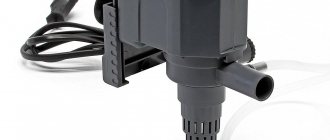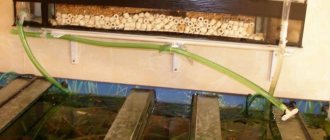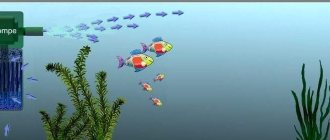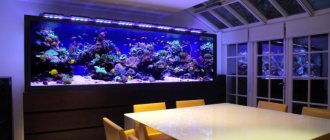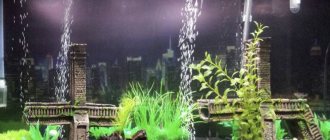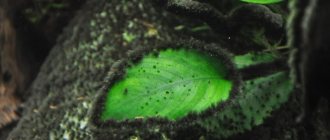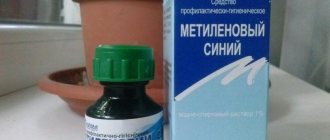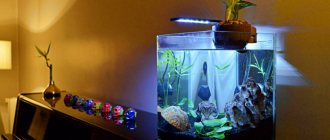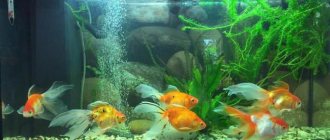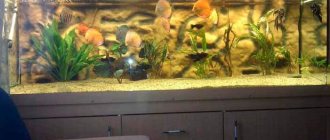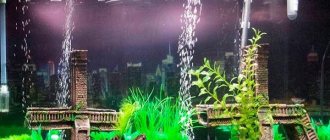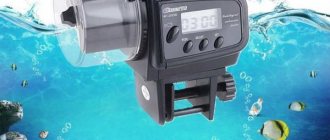For a favorable life of aquarium fish, water purification equipment is required. It is worth deciding which aquarium filter is better: internal or external, and also understand why it is needed. As you know, an aquarium filter allows you to purify water from waste products of aquatic inhabitants, allowing it not to deteriorate for a long time and not to stagnate. The operating principle of filtering devices is the same, however, they differ in performance, power, size, filter elements, and quality.
External filter small introduction
In the modern aquarium, external filters have firmly taken their place. Previously, an external filter could only be seen by aquarists who were professional fish breeders and very rarely by hobbyists. In those days, airlift filters were used, usually powered by a compressor, as well as mostly homemade hanging filters or, as they are also called, backpack or waterfall filters. I still remember my feelings when I was a ten-year-old boy, along with a well-worn aquarium made of plexiglass, assembled with screws. I received a hanging filter made by a skilled aquarist. Then it seemed to me that I had become the owner of some fantastic miracle unit and was very proud of it. By the way, that aquarium served me for about five more years. Neons, gourami, barbs felt great in it, Echinodorus and a number of other plants grew.
External filter Atman DF-1000
But time does not stand still. With the development of aquarium farming, the approach to keeping an aquarium has changed. Various technical devices began to be used more and more. The composition of fish and plants contained in the aquarium has changed. Many species that are demanding on water quality have appeared, and the density of fish stocking has also increased. Accordingly, more and more complex and technological devices began to appear to help the aquarist. Of course, all these useful devices certainly make life easier for the aquarist and expand the possibilities for keeping more demanding aquarium inhabitants. But all the same, it is necessary to strive to understand the essence of the natural processes occurring in an artificial reservoir, and not rely only on the modern technical equipment of the aquarium. Technical means help the aquarist. But they will never replace the aquarist himself. There should not be such an attitude as “I bought a cool external filter, installed it and all problems are solved.” Such an attitude is more likely to lead to big problems than to success. I apologize for the slight lyrical digression.
How aquarium filters work
Every aquarium needs regular cleaning of fish waste products and impurities in the water. In such artificial reservoirs, the population of pathogenic bacteria and small algae grows, and the liquid becomes unsuitable for pets. Filters are used to remove contaminants in liquids.
The most popular ones are those that work as pumps that cleanse the space of biological, chemical and mechanical impurities. In addition, they can mix water flows. This helps maintain the aquatic environment in a comfortable state for the fish. The filter may also contain fillers in the form of carbon components, organic sponges, bioballs, ceramics, etc.
Airlift and pump filters are available in aquarium stores.
The first type operates from a compressor and a jet pump. Water is pumped into the bottom of the tube, resulting in its aeration. Despite the simplicity of its operation, such a device is not recommended for installation in large aquariums. In addition, they are characterized by low productivity. At home, some fish breeders use pumice, expanded clay or foam rubber, replacing the biological filter with them. They plant plants on top of this layer.
The pump variety works in much the same way as the previous type of filter. The difference lies in the method of water supply. It is pushed by a pump, not an air flow. In stores you can find internal and external cleaning elements. They differ in the location of the block with the filtration material. In the internal ones it is in the water, and in the external ones it is outside it. Pump devices are used in large-capacity fish aquariums. Based on the type of cleaning, such units are divided into biofilter, mechanical, chemical and combined.
Filter general information
A filter in an aquarium is primarily needed for high-quality water purification. The density of living aquarium inhabitants is usually very high. In addition, maintaining the correct balance of the ecosystem in a small closed container is difficult. And it is precisely to prevent fish from swimming in a mixture of their own excrement instead of water and dying that an aquarium filter is needed.
Of course, instead of a filter, you can use the water change method. But in this case, the aquarist will have to make changes every day or every other day, changing about 25-30% of the water. The filter saves both time and effort for the aquarium owner.
Installation of different models
Before installing the filter in the aquarium, it is recommended to choose a suitable location. There shouldn’t be any problems with how to install a filter in an aquarium; even a novice aquarist can handle this. The installation option depends on the selected model.
Advice! On sale you can find an internal filter for an aquarium with aeration.
External
An external filter for an aquarium is installed as follows:
- Prepare a rag in case a leak occurs.
- Take out and assemble the external filter for the aquarium.
- According to the instructions, prepare the external elements.
- They start up the equipment.
- The hose designed to release water is filled with water.
- Open two taps and connect the equipment to the network.
If water does not flow, then it is worth checking for an air lock in the tubes.
Interior
The internal filter for an aquarium is quite easy to install:
- The equipment is unpacked.
- Assemble according to instructions.
- Completely immersed in water.
- Mount on the wall of the aquarium.
- Connect to the electrical network.
The pressure level on many models can be adjusted.
Donny
When choosing a bottom filter for an aquarium, it is worth considering that it is used extremely rarely. The fastening is carried out to the bottom, and a layer of soil is poured on top, which acts as a cleaner. The advantage is that the soil does not sour over time. However, there is a high probability of the appearance of hydrogen sulfide.
Biofilter
Biofilters are also available for sale. They are used to propagate bacterial colonies. Many beneficial bacteria are involved in the process of decomposing toxic ammonia.
Phytofilter
One of the types of external filter. The advantage is an environmentally friendly option for water purification. Living plants are planted in such structures.
Filtering methods
There are several main methods:
Biological method
Colonies of beneficial bacteria always settle on glass, driftwood, and decorative elements. There are especially many of them in the ground. These bacteria convert ammonia compounds into less dangerous ones. Biological method. Used for filtration. Based on the same principle. Large colonies of such bacteria that colonize the filter material. In the process of life, they break down compounds that are toxic to fish. If the filter apparatus is used correctly, all fillers will soon become colonized with beneficial bacteria. You can also use specialized biofilters. In which there are much more of these bacteria.
Mechanical method
This is the easiest way. Water is passed through a filter. At the same time, it passes through special washcloths and sponges made of synthetics, padding polyester or foam rubber. And all large pieces of debris and dirt remain on the sponges.
Adsorption method
In this case, activated carbon is used as a filler. It removes visible contaminants and harmful gases from water. Makes water clear, good for purifying water from drug residues after treating fish.
Chemical method
It is not used often. Its action is based on the use of specialized resins and zeolite minerals. It should be clarified that modern filters most often use not one, but several of the above methods.
Aquarium filters
There are 3 types of filtration. Mechanical filtration of an aquarium, biological filtration of an aquarium, chemical filtration of an aquarium.
Mechanical filtration is simple. It is designed to remove large particles from water and is inherent in any filtration.
I don’t use chemical filtration because I don’t see the need. Sometimes I can add zeolite or activated carbon, but I don’t really see a big impact on the aquarium system.
In biological filtration, the most important thing is bacteria. Here they are removing ammonia from the water. But for them to live, they need to create housing. Housing in an aquarium is soil and filter material. They need to attach themselves to something. They cannot catch their food on the fly. They turn out to be more cunning. They stick to some pebble and wait for the food to fall into their mouth. And yet, bacteria need oxygen, and therefore, if you turn off the aquarium filter at night, the bacteria simply suffocate. So the filter works around the clock.
What do we pay attention to when buying a filter?
Since not everyone likes to clean the soil all the time and not many bacteria settle there, the filter should theoretically take the brunt of it. Magic tricks practically appear. We bought a filter, but it doesn't work.
When choosing a filter, you need to pay attention to some things: the volume of the filter material, the porosity of the material, and whether it pulls dirt from below and not from the top.
Most filters cannot cope with as many fish as in the photo.
Okay, I'm a little scared and confused here. Now, what I like and what I don't like. I'm lazy and want to bother less with an aquarium. And therefore I will have a reserve of filtration. Hard to knock out.
External filter, device and principle of operation
External, or as it is also called, canister filter. It is a container in which filter material is placed. It can be very diverse, we will talk about this a little later. The external filter is located next to the aquarium, most often in a cabinet under the aquarium. With the help of a canister, we provide the bacteria involved in the water filtration process with additional area and create conditions for their reproduction and effective work. Due to the fact that the canister is large enough, we can place it outside the aquarium. Unlike internal filters, the area of the substrate for colonization by beneficial bacteria will be much larger, and accordingly the efficiency of the filter increases.
The operating principle of the external filter is as follows. Through the intake tube, water from the aquarium through a hose enters the filter using a motor (pump) ,
it is pumped into a container (canister), passes through several layers of various filter materials and again through a hose, the already cleaned product is pumped back into the aquarium. The design of the external filter may vary depending on the brand and model of the manufacturer. Water can flow from top to bottom or vice versa. The meaning of the process does not change. As a rule, a filter canister contains several baskets; filter material is placed in them. Although there are models in which baskets are not used. And the filler is placed in special bags. A striking representative of this design is the external filter from ADA, the Superjet ES-600 model. By the way, pay attention to this filter, the motor (pump) is located on the cover, which is not a typical engineering solution; as a rule, the motor is located in the cover “head” of the filter.
Here is a video with this external filter, if anyone is interested, watch it, although there is no translation into Russian, but everything is clear.
Which filter is better?
Perhaps no aquarist can give a definite answer to this question. There are quite a lot of models on the market that have been successfully used for a long period.
Sera
If we consider the problem from the point of view of the price for the device, then among the economy-class internal purifiers we can highlight the products of the German company Sera.
Inexpensive devices of this brand L30, L60, L120, L150 and even L300 are easy to use and reliable. The numbers indicate the volume of the aquarium for which they are intended.
Fluval
Italian devices from the Fluval brand are long-lived in the aquarium accessories market. The best-selling device in the line of Italian models is Fluval4 Plus. It has a strong pump, flow power indicator and a modern, eye-catching design.
However, this model has relatively large dimensions, and its filter elements quickly become clogged. According to the stated design features, the filter cartridge can be changed without stopping the operation of the device and without removing it from the water.
But in fact, during this operation, some of the garbage still ends up back into the water. It is better to turn off the device for a while and calmly change the cartridge.
AquaEl FAN
Polish-made AquaEl FAN internal aquarium cleaners have become very popular. And completely justified. Having low energy consumption with a relatively powerful pump, Polish devices are reliable, simple, and effective.
They compare favorably with their Chinese and some European counterparts in the original filter material (phenol-free sponge), on which bacteria actively settle, ensuring high-quality processing of organic residues and nitrogen compounds.
According to aquarists, AquaEl FAN has only one drawback - increased noise level when working with aeration.
Eheim
Eheim brand internal filter devices can be called the elite of this type of device. The designers of the German company Eheim GmbH & Co meticulously and creatively approached the problem of creating a unified filter.
For example, the Eheim 2212 AquaBall model has an original outlet pipe design. Like a joystick, it can be rotated in any direction using a ball design. This is very convenient, since the flow of water and air bubbles can even be directed downward.
The devices are almost silent, the filter sections in the glass can be swapped, and standard biofillers do an excellent job of their biological purification function.
The devices under consideration, which are the most expensive in their class, have only one drawback - the axis of the pump impeller is ceramic (in all other models it is metal). Therefore, special care must be taken when disassembling and servicing such a filter.
The variety of aqua filters that work inside an aquarium is great. Which one is better? Perhaps one that meets the requirements of reliability, functionality, efficiency and is suitable for an aquarium of a specific capacity.
External filter fillers
Due to its design, the external filter allows you to organize multi-stage purification of aquarium water. Mechanical water purification - removal of suspended particles from water. Biological filtration is the decomposition of dangerous, toxic substances that accumulate in the aquarium during the life of the inhabitants into compounds that are safe for organisms. This process is called the nitrogen cycle. In this article we will not go into details; I will tell you in detail about this most important cycle in the aquarium in a separate article. Chemical filtration is the removal of hazardous or unnecessary substances from water using special adsorbents. Depending on the specific tasks, you can select external filter fillers so as to load the canister with filter material as efficiently as possible.
For mechanical purification of water in filters, sponges of varying density and porosity are used. The smaller the sponge cells, the smaller dirt particles it will retain. They also use synthetic winterizer to purify water from the smallest particles of dirt. If the presence of filter sponges is provided, use an external filter. It makes sense to arrange them this way. A sponge with large cells is placed in the first or second basket, then other fillers go, and a padding polyester is placed on top for final fine cleaning. It is only necessary to take into account the fact that synthetic winterizer quickly clogs and the filter with synthetic winterizer has to be serviced more often.
There are a huge number of fillers for biological filtration. These can be ceramic rings, ceramic balls, and similar materials. Sometimes expanded clay is used as a filler in homemade external filters. As a rule, they have a porous structure; their main task is to provide filter bacteria with an area to colonize. This condition is necessary for the external filter to operate effectively. There are also ceramic rings that have a smooth surface and do not have the task of such material to break the flow of water entering the filter. In order to ensure maximum, uniform distribution over the entire area of the filter material. It is advisable to place such a substrate in the first filter basket.
Chemical filtration is provided using media such as activated carbon, zeolite, and ion exchange resins. Activated carbon has a highly porous microstructure. Due to this, it effectively removes (adsorbs) toxins, acids and microelements. Most often, activated carbon is used in filters after treating fish in an aquarium in order to remove drug residues from aquarium water. Zeolites are also powerful adsorbents due to their structure.
An approximate arrangement of filter elements in an external filter may look like this. Provided that water flows from bottom to top. The first basket in the canister is filled with smooth ceramic rings. The second is a sponge with large cells. The third basket is filled with porous ceramic rings or balls. Next, a fine-pored sponge and either activated carbon or zeolite are placed, and a padding polyester is placed on top. The diagram is approximate. The filling of the external filter is always selected individually based on the needs of the aquarium inhabitants. Filters from many manufacturers come already equipped with fillers; in this case, you just need to follow the instructions included with the filter.
For example, I never use padding polyester in my filters. Which, trapping small particles, clogs very quickly and requires replacement. Accordingly, you have to open and close the filter much more often, which leads to wear of its elements, in particular the sealing ring. In my opinion, to remove suspended matter in an aquarium, you can simply install a pump with a fine sponge. Although this is my personal opinion. I also do not use activated carbon in the external filter. When it is necessary to remove, for example, remaining medications from the water after treating fish, I place the carbon in a waterfall filter and remove it after a few days of weeks. In any case, please note that activated carbon, unlike fillers intended for colonization by bacteria, requires periodic replacement. The useful life of coal does not exceed four months; zeolites also require recovery.
Below is a video about the location of the filter elements in the AQUAEL external filter, model Unimax 700. Please note, this filter model uses a UV lamp for additional sterilization of water in the aquarium.
Popular manufacturers
Some of the best manufacturers of internal filters for aquariums, according to professional aquarists, are:
- Tetra;
- Aquael;
- Sera.
Now let's talk in more detail about each manufacturer.
Aquael filters FAN series
This series is the simplest and most inexpensive, the operating principle is based on mechanical filtration, the country of origin is Poland. Suitable for aquariums from 3 to 250 liters. A novice aquarist can easily cope with installing and maintaining equipment.
There are five models of Aquael FAN series filters:
- FAN Micro. Used for cleaning aquariums whose volume is 0–30 liters, the maximum productivity of the model is 250 l/h.
- FAN Mini. Suitable for tanks from 30 to 60 liters. Maximum productivity - 260 l/h.
- FAN 1. Designed for aquariums with volumes from 60 to 100 liters. Maximum productivity - 340 l/h.
- FAN 2. Designed for aquariums with a volume of 100-150 liters. Maximum productivity - 450 l/h.
- FAN 3. Suitable for tanks whose volume varies from 150 to 250 liters. Maximum productivity - 700 l/h.
Sera
A German company producing equipment for aquariums and fish food. There are several types of Sera filters:
- The L series is designed for aquariums up to 300 liters. The equipment is airlift, powered by an air compressor;
- The F series is designed for tanks with volumes of 100, 150 and 300 liters. Mechanical water purifiers consist of a sponge and a pump;
- The fil series is suitable for containers with volumes up to 60 or 120 liters, respectively. Filter material activated carbon and sponge.
Tetra
Another German brand that has proven itself well among amateur and professional aquarists. Tetra produces the following filter models:
- EasyCrystal with combined filtration. Designed for tanks up to 40, 60 and 130 liters;
- IN plus. The series provides biological and mechanical water purification. There are two cleaning chambers, used in aquariums with volumes up to 60, 100, 150 and 200 liters;
- Filter Jet - the simplest mechanical filtration in aquariums from 50 to 120 liters, 120-170 liters, 170-230 liters;
- BrillantFilter, powered by a compressor. Designed to work in containers up to 100 liters.
How to choose an external filter. What to pay attention to
The choice of an external filter should be approached very carefully. You buy a filter for a long time and all the time. During operation, it must work normally and perform its functions. Agree. Few people want to constantly run around looking for spare parts or have trouble if it leaks. On aquarium websites and forums, issues related to external filters, their reliability, ease of use, quality and quantity of fillers, price, etc. are constantly discussed. After spending some time, you can get a complete picture of a particular model and make your choice based on this .
Each external filter model has its own technical characteristics. Manufacturers indicate for what volume of aquarium this filter is suitable. Here it should be noted that the power of the filter, the amount of water pumped in liters per hour can be indicated for an empty filter without fillers. It is clear that if you load the canister with filter material, this figure will be less. And over time, when the fillers become clogged and the hoses become overgrown from the inside. The power indicator will be even lower. Somehow, out of curiosity, I measured how much the external filter actually pumps. This is what happened. I have an external Atman DF-1000 filter with a specified power of 1500 l/h; in a newly launched aquarium with clean fillers, the filter pumped about 1000 - 1200 l/h. After three months of operation, this figure was already about 700-800 l/h. In any case, if possible, you should choose with some margin. For example, you have a 200 liter aquarium. It is worth purchasing a filter designed not for a 150-200 liter aquarium, but for a 200-350 liter one.
When choosing an external filter for an aquarium, pay attention to the possibility of purchasing spare parts for the model you have chosen. As well as the availability of service and warranty obligations of the seller and manufacturer. You should not purchase little-known models, of which there are a huge number on the market now. Even if you like the price of the product. Subsequently, such “savings” will result in large losses. An attentive reader will say “Aha! advises not to save money, but from the Chinese Atman himself! How so?” Everything is correct. But the fact is that this company is a very large and reputable manufacturer of aquarium equipment, both in China and abroad. I didn’t make my choice in five minutes either. I first read the forums and reviews about this product. By the way, according to the passport, the filter was released in 2008 and still works without a single failure. This suggests that the choice was made correctly. What am I talking about? Besides, you shouldn’t buy outright consumer goods, but you shouldn’t overpay for a brand either, you can always find a middle ground.
Video on the topic
Watch a video about the internal filter for an aquarium:
Internal filters are easy to use, reliable, safe, and low cost. They are easy enough to install in the aquarium to provide comfortable conditions for the fish.
- Related Posts
- How does a phytofilter for an aquarium work and how to make it yourself?
- Is it worth buying an external filter for an aquarium? Device Description
- What are the benefits of hanging filters for an aquarium?
First connection of an external filter
I think there is no point in describing in detail the process of connecting a canister filter, since each specific model has its own nuances and if you follow the instructions, problems should not arise. I will only draw attention to the following general things. Before adding fillers, rinse them with running water. It is much easier to start the filter if you first fill it with water, rather than using the start button (pumping water). When installing the baskets, check the order in which they are positioned. Improperly installed external filter baskets can cause misalignment and improper operation. Hoses should be cut only after they have been tried on at the place where the filter will be permanently installed. The first time after switching on, the filter can make quite a noticeable noise. This will pass with time. As soon as all the remaining air comes out. You can wiggle the filter a little, as a rule, this helps to quickly get rid of accumulated air.
Filter care
The water purification device must be maintained. The device that performs mechanical water purification is washed once a week. To do this, it is disconnected from the network, removed from the aquarium, the sponge is released from the “glass” and thoroughly washed to remove accumulated contaminants. Washing is carried out in drained aquarium water, but many fish lovers prefer to do this under running water, which is fundamentally wrong.
The biological water purification filter is “disassembled” once every six months. Replace the ceramic filler and thoroughly wash the compartment for it. A chemical water purifier requires quarterly maintenance. The old absorbent is replaced with a new one, the parts are washed.
Maintenance and cleaning of the external filter
The external filter, unlike the internal one, is cleaned quite rarely. A normally working filter is not touched for months, or even years. It is necessary to periodically inspect the filter for leaks. If it's time to clean the filter, you need to remember the main point: do not rinse the filter fillers with running tap water, just rinse in aquarium water. Otherwise, colonies of beneficial filter bacteria will be destroyed and it will take time for them to repopulate. The filter rotor axis also needs to be cleaned; debris often gets wrapped around it, which can interfere with the normal operation of the filter. The gasket between the filter housing and the filter “head” should be lubricated with a special gel and periodically replaced with a new one. This is one of the weakest points of the external filter. You should not frequently open the filter or carry out any manipulations with it. There must be a set and forget principle. We just monitor its correct operation. Most leaks occur after interference with the filter. It is convenient to clean hoses and tubes using a special brush. True, the hero of the video uses his own device to clean hoses.
Well, that’s all I wanted to tell you in this article, I’m thinking of writing a separate article on the most common failures of the external filter and how to fix them.
And finally, here’s another video on cleaning and maintaining my external filter , which has worked without cleaning for more than 11 months.
I hope you were interested in the article about the external filter. Write your comments and questions in the comments, we’ll try to figure it out together. All the best!
And also join the VK and FACEBOOK groups, subscribe to news on TWITTER and the YOUTUBE channel so as not to miss interesting articles and videos.
Materials used in the production of aquarium equipment.
Aquarium water, unlike drinking water, contains many more impurities than it seems.
Although aquariums are filled from a drinking water supply. In terms of its chemical and biological parameters, aquarium water is closer to river or lake water. The presence of a large number of microorganisms in it is due to the vital activity of fish and plants that produce certain substances necessary for the life of bacteria and algae. Fish breathe oxygen dissolved in water and exhale carbon dioxide. In plants, during the process of photosynthesis, there is a process of consuming carbon dioxide to obtain the carbon they need for growth and releasing oxygen. In addition, plants also breathe oxygen, releasing carbon dioxide. These two processes run parallel to each other, and plants also breathe around the clock. In this case, carbon is oxidized to its oxide, releasing the energy needed by plants for photosynthesis. Carbon dioxide dissolves readily in water, creating carbonic acid. This process is reversible; carbonic acid breaks down into carbon dioxide and water. The solubility of gases in water depends on its temperature and on their concentration in the air, the so-called partial pressure of the gas. During the life of bacteria, hydrogen sulfide is released, which is harmful to both fish and plants. When dissolved in water, it also forms an acid. Ammonia, ammonium, nitrites and nitrates - nitrogen compounds, phosphorus and sulfur compounds, entering into various redox reactions with each other, and in conjunction with carbon dioxide and oxygen dissolved in aquarium water, interacting with soil of sedimentary origin, create both organic and and inorganic compounds that change the composition of water, its hardness and acidity. All these gases dissolved in water, ions of dissolved chemical compounds, bacteria and algae, always present in aquarium water, create a rather aggressive environment that can hardly be called drinking water. That is why it is difficult to use equipment made of metals in an aquarium. For the manufacture of equipment for aquariums in contact with water, chemically inert materials are used: glass, ceramics, plastics or polymers. Some parts may be made of metal. But this metal must be both chemically resistant and strong enough to avoid corrosion during operation, possible breakdown due to wear, and to prevent compounds of this metal or alloy from getting into the aquarium water, which can negatively affect the life of the creatures living in it, lead to their death. Therefore, it is better to avoid using metal objects and structures when arranging an aquarium. Aquarium equipment made from chemically inactive substances is one of the keys to a quiet life for the aquarist and his charges. Konstantin Abramov (Daxel) Resources used: https://ru.wikipedia.org/wiki https://www.aqa.ru/forum/ Discuss on the forum
Other aquarium filter options
Phytofilter
There are other types of filters. But I don't use them. Bottom - theoretically good, but in practice it is impossible to clean it. A phytofilter is an interesting option, but problematic to create and maintain. But it is definitely the most beautiful of all filters, and it works. The remote filter also works. But I don't like the concept. The idea is that it does not take up space in the aquarium. But then he takes the side. Good options when they are built into the lid. But there is a problem with the lid; ceramics cannot be placed there. What comes out is neither an external filter nor an internal one. But it works. There are also sand filters, but I haven’t seen them since they are used in industrial aquariums.
I hope that after describing how an aquarium filter works and how water is filtered in an aquarium, this topic has become clearer to you. There are many more interesting articles here on the site, including in-depth ones about water filtration in an aquarium.
External filtration in the aquarium
First, I’ll tell you about the options for filling with filter material. The first is professional ceramics. As a rule, the more expensive the better in terms of area to volume ratio. This means you can clean less often. You can also use washcloths there. I've tried different options and they all work. I am more accustomed to working with washcloths.
Water circulation
Now a little about the specifics of the operation of external filters. They should be below the level of the aquarium. Or at least on the same level. Either on the side, or hiding under the aquarium. The filter must close perfectly. No leaking joints. Indeed, if the connection is incorrect, all the water from the aquarium can migrate to the floor. All hoses and adapters must close perfectly. Next, start the filter. First you fill it with water, then close it, then try to expel the air that remains in the hoses. The process occurs differently in each filter. But there should be no air in the filter. There are leaks in the fluvalas, turn the filter off and on from the socket several times, turn it over, and use a glass to push water into the hose.
Aquarium filter China
The disadvantage of Chinese boxes is that the volume of the washcloth is much smaller. But the plus is that they are more compact in an aquarium. This is the most problematic option compared to the previous options. But I use them sometimes. By the way, about the brand, which one to buy. I have come across many and they all look the same. They differ in reliability. There are brands that work for 3 months, there are 1.5 years. There are 3-4 years, and there are 10 years. There is nothing new from different manufacturers. They all took one template and produced them in trainloads. The only thing you should pay attention to is the washcloth. It should be porous, like a dish sponge. I consider filters from Aquael and Jewel to their level. True, they cost like German ones, but clean like Chinese ones. Plus they have something else in design and many models have a fence on top.
Their washcloth has too small an area for bacteria to settle, so it won’t clean properly. It doesn't clean, it drives water. Plus, as a rule, the washcloth is not finely porous. We place them where there is no need to create water currents in small aquariums. Or for the growth of fry, where the main impact on filtration is taken by water changes. But we do not consider this option as filtering.
Now what's not to like. Tetra, AquaEl, Juwel. I do not take aquariums with these types of filters for service. Or in Yuvely I just deliver normal ones, and let the wheelchair run the water. Constant problems even with herbalists. I'm not even talking about loading the system with overpopulation. They just can't handle it. Maybe I just came across such cases, but practice is a stubborn thing. If you put 10 neon tanks in 50 liters, then these filters will cope. But I notice mistakes in their design. The impression is that they are following the lead of the stores - the filtration is worse, they will buy more fish. It's hard for me to understand. I've only seen small shops stocked with them. All large stores definitely don’t use this.
As for other little-known brands, I won’t go deeper. Among them there are both good options and those that do not clean. The main thing is to understand the principle of their operation.
Head and washcloth in the aquarium
Next is the option with a head and a washcloth. Head China and which company to take - there is almost no difference. Everything works, but the question is exactly how long? There are only a few brands there when the head has been working for decades. By the way, my not favorite watercolor - to be fair, the head lasts for 10 years. But, I do not recommend buying because... the price for analogues is 2 times higher.
In the photo there are more than 1 kg of fish in 300 liters. The filter is a regular head with a washcloth.
Fairly good filtration. Most stores stock them. But they need high-quality filtration of water in the aquarium and for little money. So they choose a practical option. The downside for a decorative aquarium is that you need to figure out how to decorate it. Well, it doesn’t look good in an aquarium and you need to hide it behind stones, plants, and snags. The second disadvantage is noise. It is noisier than its more expensive relatives. If these are solvable problems for you and you want cheaper filtration, this is the best option.
Tips for choosing
The design of internal aquarium filters is so simple that even a beginner can easily figure it out. This is a cylindrical plastic body with special holes for drawing in water. Inside the housing there are sections where the filter elements are located. Typically used:
- special modules (ultraviolet, ceramic);
- biological sponges;
- filler (mainly activated carbon).
When the pump operates, water from the container is drawn into the filter and then passes through a stepwise cleaning system. The purified water is then returned back to the aquarium. On the market you can find more expensive analogues of filters that have additional functions, for example, a heating element, pump power.
When choosing, you need to take into account various factors:
- number of aquatic inhabitants;
- feeding frequency;
- presence and number of plants (both real and artificial).
Model performance is also important. It is desirable that it be at least 5-7 volumes. For a hundred-liter tank, options are selected that pump at least five hundred liters per hour. It is not recommended to choose devices that are too small, since small dimensions negatively affect the amount of filter material.
